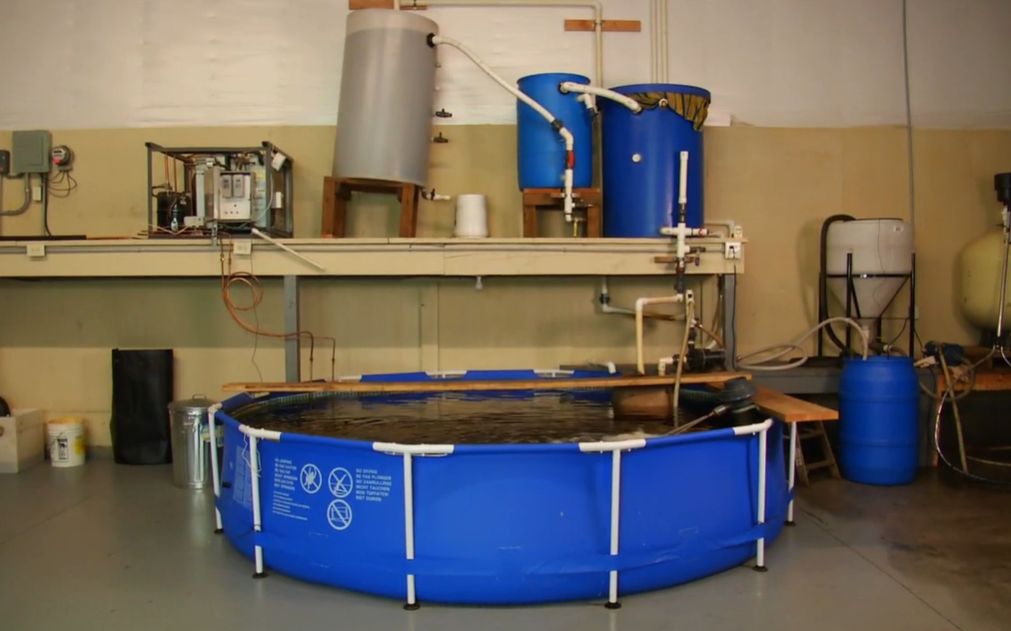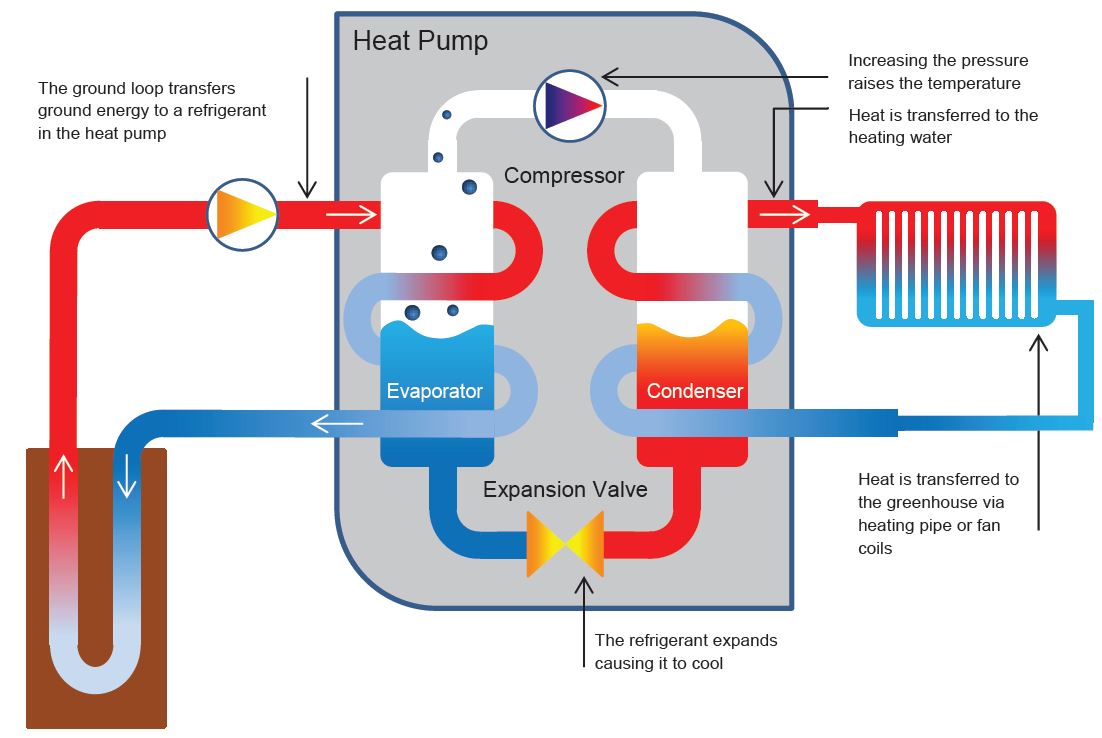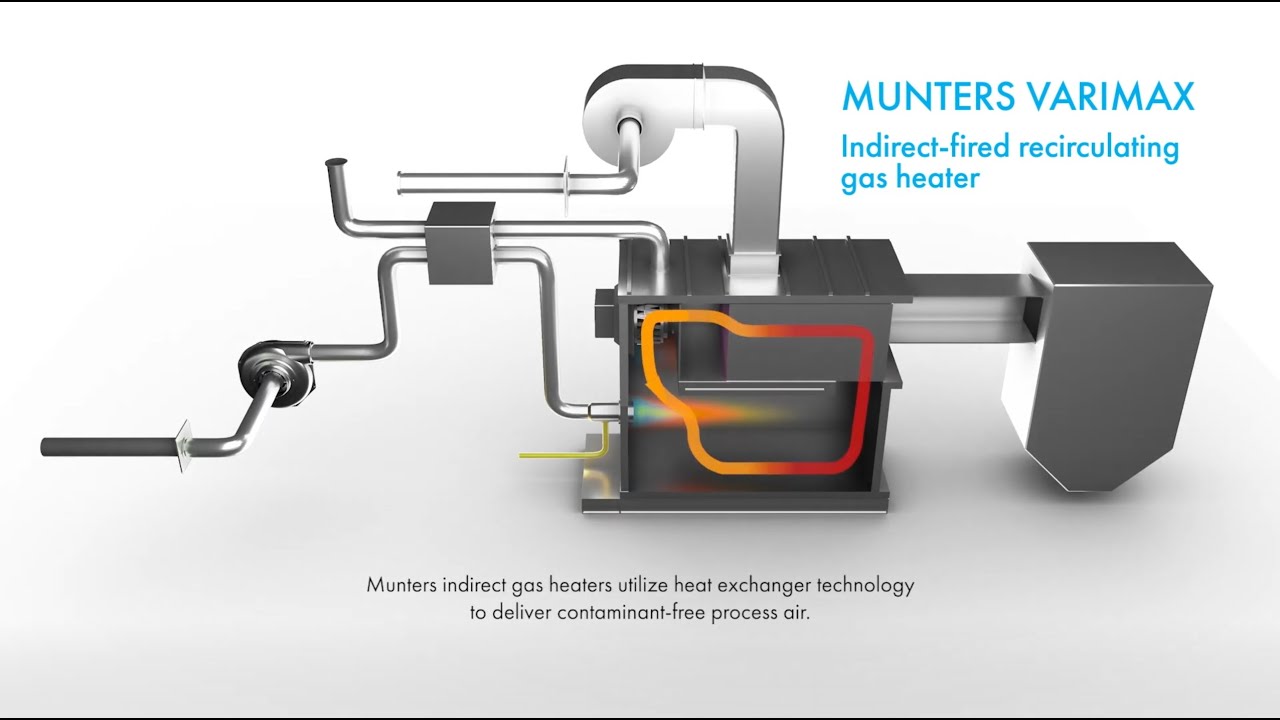Key Takeaways
-
Heat recovery systems can reduce energy costs by up to 50% by recycling waste heat.
-
Maintaining stable temperatures with a heat recovery system can improve aquatic life health and plant growth.
-
Heat recovery systems can enhance water quality by reducing the need for frequent water changes.
-
Installing a heat recovery system is a straightforward process that can be done with basic tools and materials.
-
Compared to heat pumps, heat recovery systems are more environmentally friendly and cost-effective.
Heat Recovery System Solutions and Benefits
Have you ever wondered how to make your aquaculture or hydroponics system more efficient and sustainable? One effective solution is incorporating a heat recovery system. This system captures and reuses heat that would otherwise be lost, significantly improving the energy efficiency of your setup.
Quick Introduction to Heat Recovery Systems
Heat recovery systems are ingenious devices designed to capture waste heat from various sources, such as lighting, pumps, and other equipment, and reuse it to maintain optimal temperatures. By doing so, they not only reduce energy consumption but also contribute to a more stable and controlled environment for both aquatic life and plants.
Imagine you have a hydroponics setup in your greenhouse. During the day, the lights generate a lot of heat, which usually gets vented out to prevent overheating. With a heat recovery system, that heat can be captured and redirected to warm up the nutrient solution or the air inside the greenhouse. This process significantly reduces the need for additional heating, saving you money on energy bills.

“DIY Heat Recovery System …” from Food Farmer Earth.
Why Heat Recovery Systems Matter in Aquaponics
Drastic Energy Cost Reduction
One of the most compelling reasons to install a heat recovery system is the potential for drastic energy cost reduction. By recycling waste heat, these systems can cut energy consumption by up to 50%. This is particularly beneficial for large-scale operations where heating costs can be substantial.
For example, consider an aquaculture farm that spends $1,000 per month on heating. With a heat recovery system, that cost could be reduced to $500, saving $6,000 annually. These savings can be reinvested into other areas of the operation, such as expanding the farm or upgrading equipment.
Stable Temperature Maintenance
Maintaining stable temperatures is crucial for the health and growth of aquatic life and plants. Temperature fluctuations can cause stress and harm, leading to reduced yields and increased mortality rates. Heat recovery systems help maintain consistent temperatures by capturing and reusing heat, creating a more stable environment.
For instance, in a hydroponics system, sudden drops in temperature can slow down plant growth and affect nutrient uptake. By using a heat recovery system, you can ensure that the temperature remains within the optimal range, promoting healthier and faster-growing plants.
Enhanced Water Quality
Heat recovery systems can also enhance water quality by reducing the need for frequent water changes. In aquaculture systems, maintaining optimal water temperature is essential for the health of the fish and other aquatic organisms. Frequent water changes can disrupt the balance of the ecosystem, leading to stress and disease.
By using a heat recovery system, you can maintain the desired water temperature without constantly changing the water. This not only conserves water but also creates a more stable and healthy environment for the aquatic life. For more information on sustainable practices, check out our guide on sustainable crop production in aquaponic systems.
Applying Heat Recovery Systems in Aquaponics
Applying heat recovery systems in aquaponics can be transformative. These systems capture heat that would otherwise be wasted and redirect it to maintain optimal temperatures for both plants and aquatic life. This not only saves energy but also promotes a healthier and more productive environment.
Here are some key steps to successfully apply heat recovery systems in your aquaponics setup:
-
Assess the heat sources: Identify all potential sources of waste heat, such as lights, pumps, and other equipment.
-
Select the right heat exchanger: Choose a heat exchanger that fits your system’s size and needs.
-
Install the heat exchanger: Position it strategically to maximize heat capture and transfer efficiency.
-
Integrate with your system: Connect the heat exchanger to your water or air circulation system to redistribute the captured heat.
-
Monitor and adjust: Keep an eye on the system’s performance and make necessary adjustments for optimal efficiency.
By following these steps, you can ensure that your heat recovery system is effectively capturing and reusing heat, leading to significant energy savings and a more stable environment.
Installing the System
Installing a heat recovery system may seem daunting, but it’s a manageable task with the right approach. Begin by identifying the primary sources of waste heat in your setup. This often includes lighting, pumps, and other equipment that generate heat during operation.
Next, choose a heat exchanger that matches your system’s requirements. Heat exchangers come in various sizes and types, so it’s essential to select one that can handle the heat load and integrate seamlessly with your existing setup.
Once you’ve selected the heat exchanger, install it in a location where it can effectively capture the waste heat. This might involve connecting it to your ventilation system or placing it near the heat source. Finally, connect the heat exchanger to your water or air circulation system to redistribute the captured heat throughout your aquaponics setup.
Configuring for Optimal Performance
Configuring your heat recovery system for optimal performance involves fine-tuning various components to ensure maximum efficiency. Start by monitoring the temperature levels in different parts of your system. This will help you identify any areas that require additional heat or cooling adjustments.
Adjust the flow rate of the water or air passing through the heat exchanger to optimize heat transfer. Too fast or too slow a flow rate can reduce the system’s efficiency. Regularly check the heat exchanger for any signs of clogging or buildup, as this can hinder performance.
Additionally, consider integrating automated controls that adjust the system based on real-time temperature readings. This can help maintain a stable environment without constant manual intervention.
Maintenance Tips
Maintaining your heat recovery system is crucial for ensuring its long-term performance and efficiency. Here are some maintenance tips to keep your system running smoothly:
-
Regularly clean the heat exchanger to prevent clogging and buildup.
-
Check for any leaks or damage in the system and repair them promptly.
-
Monitor the temperature levels and adjust the system as needed to maintain optimal performance.
-
Inspect the connections and fittings to ensure they are secure and free from corrosion.
-
Schedule periodic professional inspections to identify and address any potential issues.
By following these maintenance tips, you can extend the lifespan of your heat recovery system and ensure it continues to provide energy savings and a stable environment for your aquaponics setup.
The Difference Between Heat Recovery System and Heat Pump
While both heat recovery systems and heat pumps are designed to improve energy efficiency, they operate on different principles and offer distinct benefits. Understanding these differences can help you choose the right solution for your needs.
Electricity Consumption Comparison Between Heat Recovery System and Heat Pump
Heat recovery systems are generally more energy-efficient than heat pumps because they recycle waste heat that would otherwise be lost. This means they require less electricity to operate. In contrast, heat pumps use electricity to transfer heat from one location to another, which can result in higher energy consumption.
For example, a typical heat recovery system might reduce energy costs by up to 50%, while a heat pump might only achieve a 30% reduction. This difference can be significant, especially for large-scale operations with high energy demands.
Environmental Benefits of Heat Recovery System vs Heat Pump
Heat recovery systems offer several environmental benefits over heat pumps. By recycling waste heat, they reduce the overall energy consumption of your aquaponics setup, leading to lower greenhouse gas emissions. Additionally, because they require less electricity to operate, they place less strain on the power grid and reduce the need for fossil fuel-based energy production.
Moreover, heat recovery systems contribute to water conservation by reducing the need for frequent water changes. This is particularly important in regions with limited water resources, where sustainable water use is crucial for long-term environmental health.
FAQs
Let’s address some common questions about heat recovery systems to help you better understand their benefits and applications:
What is a heat recovery system?
A heat recovery system is a device that captures waste heat from various sources, such as lighting, pumps, and other equipment, and reuses it to maintain optimal temperatures in your aquaponics or hydroponics setup. This process improves energy efficiency and creates a more stable environment for plants and aquatic life.
How does a heat recovery system save energy?
By capturing and reusing waste heat, a heat recovery system reduces the need for additional heating, which in turn lowers energy consumption. This can lead to significant cost savings and a more sustainable operation.
Is it expensive to set up a heat recovery system?
The initial cost of setting up a heat recovery system can vary depending on the size and complexity of your setup. However, the long-term energy savings and environmental benefits often outweigh the initial investment. Many systems pay for themselves within a few years through reduced energy costs. For more information on smart systems, check out smart greenhouse systems.
What maintenance does a heat recovery system require?
Regular maintenance is essential to ensure the optimal performance of your heat recovery system. This includes cleaning the heat exchanger, checking for leaks or damage, monitoring temperature levels, and inspecting connections and fittings. Periodic professional inspections can also help identify and address potential issues before they become major problems.
Applying heat recovery systems in aquaponics can be transformative. These systems capture heat that would otherwise be wasted and redirect it to maintain optimal temperatures for both plants and aquatic life. This not only saves energy but also promotes a healthier and more productive environment.
Here are some key steps to successfully apply heat recovery systems in your aquaponics setup:
-
Assess the heat sources: Identify all potential sources of waste heat, such as lights, pumps, and other equipment.
-
Select the right heat exchanger: Choose a heat exchanger that fits your system’s size and needs.
-
Install the heat exchanger: Position it strategically to maximize heat capture and transfer efficiency.
-
Integrate with your system: Connect the heat exchanger to your water or air circulation system to redistribute the captured heat.
-
Monitor and adjust: Keep an eye on the system’s performance and make necessary adjustments for optimal efficiency.
By following these steps, you can ensure that your heat recovery system is effectively capturing and reusing heat, leading to significant energy savings and a more stable environment.
Installing the System
Installing a heat recovery system may seem daunting, but it’s a manageable task with the right approach. Begin by identifying the primary sources of waste heat in your setup. This often includes lighting, pumps, and other equipment that generate heat during operation.
Next, choose a heat exchanger that matches your system’s requirements. Heat exchangers come in various sizes and types, so it’s essential to select one that can handle the heat load and integrate seamlessly with your existing setup.
Once you’ve selected the heat exchanger, install it in a location where it can effectively capture the waste heat. This might involve connecting it to your ventilation system or placing it near the heat source. Finally, connect the heat exchanger to your water or air circulation system to redistribute the captured heat throughout your aquaponics setup.
Configuring for Optimal Performance
Configuring your heat recovery system for optimal performance involves fine-tuning various components to ensure maximum efficiency. Start by monitoring the temperature levels in different parts of your system. This will help you identify any areas that require additional heat or cooling adjustments.
Adjust the flow rate of the water or air passing through the heat exchanger to optimize heat transfer. Too fast or too slow a flow rate can reduce the system’s efficiency. Regularly check the heat exchanger for any signs of clogging or buildup, as this can hinder performance.
Additionally, consider integrating automated controls that adjust the system based on real-time temperature readings. This can help maintain a stable environment without constant manual intervention.
Maintenance Tips
Maintaining your heat recovery system is crucial for ensuring its long-term performance and efficiency. Here are some maintenance tips to keep your system running smoothly:
-
Regularly clean the heat exchanger to prevent clogging and buildup.
-
Check for any leaks or damage in the system and repair them promptly.
-
Monitor the temperature levels and adjust the system as needed to maintain optimal performance.
-
Inspect the connections and fittings to ensure they are secure and free from corrosion.
-
Schedule periodic professional inspections to identify and address any potential issues.
By following these maintenance tips, you can extend the lifespan of your heat recovery system and ensure it continues to provide energy savings and a stable environment for your aquaponics setup.
The Difference Between Heat Recovery System and Heat Pump
While both heat recovery systems and heat pumps are designed to improve energy efficiency, they operate on different principles and offer distinct benefits. Understanding these differences can help you choose the right solution for your needs.

“How does a heat pump work? ” from horticulture.ahdb.org.uk |

“High-Temperature Heat & Energy Recovery …” from www.munters.com |
Electricity Consumption Comparison Between Heat Recovery System and Heat Pump
Heat recovery systems are generally more energy-efficient than heat pumps because they recycle waste heat that would otherwise be lost. This means they require less electricity to operate. In contrast, heat pumps use electricity to transfer heat from one location to another, which can result in higher energy consumption. To explore more about sustainable solutions, check out our guide on sustainable crop production.
For example, a typical heat recovery system might reduce energy costs by up to 50%, while a heat pump might only achieve a 30% reduction. This difference can be significant, especially for large-scale operations with high energy demands.
Environmental Benefits of Heat Recovery System vs Heat Pump
Heat recovery systems offer several environmental benefits over heat pumps. By recycling waste heat, they reduce the overall energy consumption of your aquaponics setup, leading to lower greenhouse gas emissions. Additionally, because they require less electricity to operate, they place less strain on the power grid and reduce the need for fossil fuel-based energy production.
Moreover, heat recovery systems contribute to water conservation by reducing the need for frequent water changes. This is particularly important in regions with limited water resources, where sustainable water use is crucial for long-term environmental health.
FAQs
Let’s address some common questions about heat recovery systems to help you better understand their benefits and applications:
What is a heat recovery system?
A heat recovery system is a device that captures waste heat from various sources, such as lighting, pumps, and other equipment, and reuses it to maintain optimal temperatures in your aquaponics or hydroponics setup. This process improves energy efficiency and creates a more stable environment for plants and aquatic life.
How does a heat recovery system save energy?
By capturing and reusing waste heat, a heat recovery system reduces the need for additional heating, which in turn lowers energy consumption. This can lead to significant cost savings and a more sustainable operation.
Is it expensive to set up a heat recovery system?
The initial cost of setting up a heat recovery system can vary depending on the size and complexity of your setup. However, the long-term energy savings and environmental benefits often outweigh the initial investment. Many systems pay for themselves within a few years through reduced energy costs.
What maintenance does a heat recovery system require?
Regular maintenance is essential to ensure the optimal performance of your heat recovery system. This includes cleaning the heat exchanger, checking for leaks or damage, monitoring temperature levels, and inspecting connections and fittings. Periodic professional inspections can also help identify and address potential issues before they become major problems.
